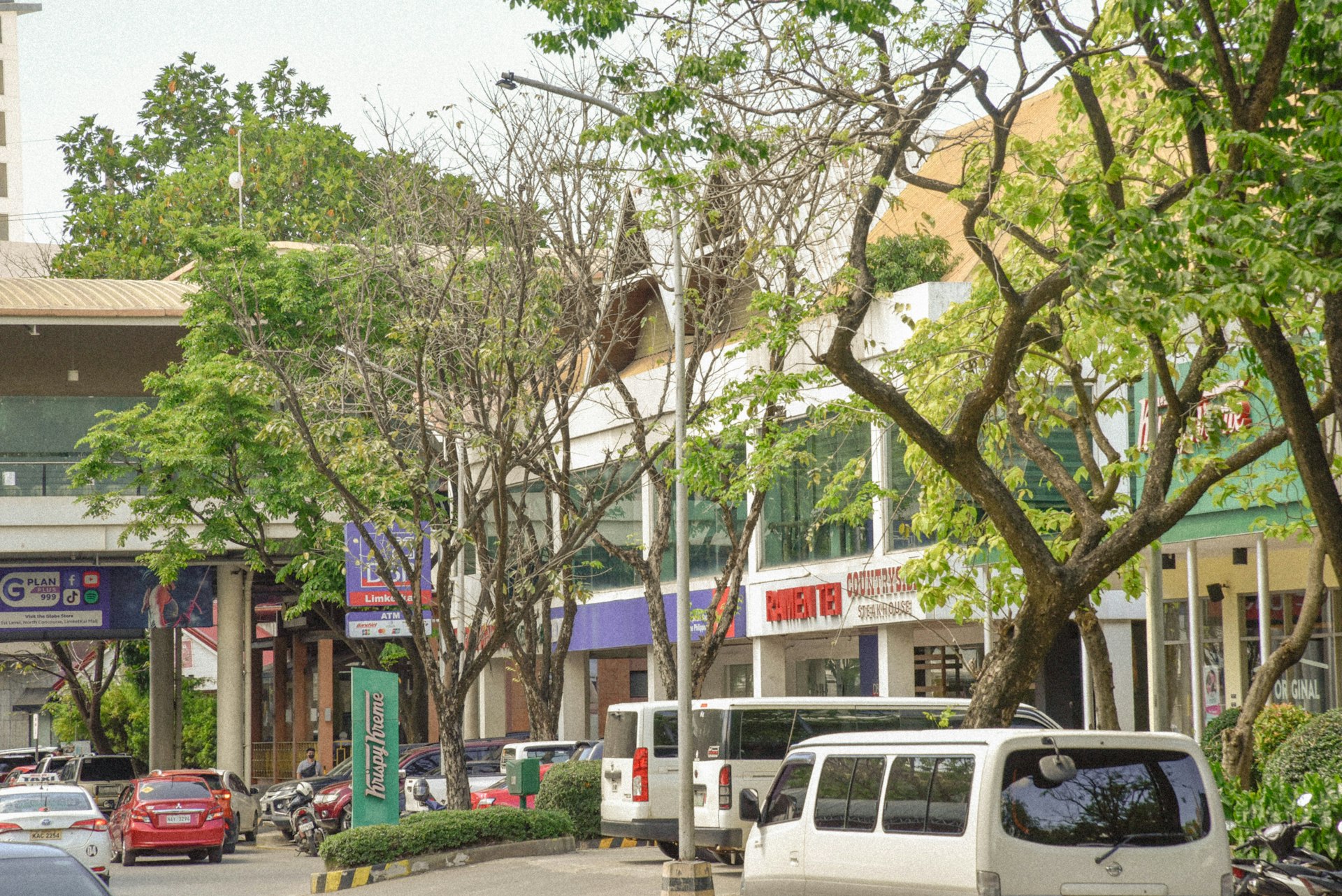Unlocking Real Estate Potential: Opportunities in Suburban Retail Centers


Photo by Christian Dala on Unsplash
Introduction: The Rise of Suburban Retail Centers
In the changing landscape of commercial real estate, suburban retail centers are emerging as prime locations for investment, development, and revitalization. Economic, demographic, and lifestyle trends are driving both businesses and consumers away from crowded urban cores toward more accessible, vibrant suburban communities. This shift is creating a wealth of new opportunities-but also brings unique challenges and considerations. This article explores how to identify, access, and seize opportunities in suburban retail centers and provides actionable guidance for investors, developers, and retailers seeking growth in 2025 and beyond.
Section 1: Why Suburban Retail Centers Are Attracting Investment
Population growth in suburban areas is fueling demand for retail, office, and mixed-use spaces. In locations like Gainesville, Georgia, outward migration from urban centers has driven an 11% population increase between 2020 and 2023, highlighting the appeal of affordable living and lifestyle amenities outside the city core [1] . Suburban retail centers, once dominated by enclosed malls and traditional big-box stores, are being reimagined as dynamic, open-air, mixed-use destinations that cater to modern consumer preferences for convenience, experiences, and community.
Key drivers of suburban retail growth include:
- Remote and hybrid work models, which keep more people in suburban neighborhoods during the workweek
- Rising housing costs in urban areas, pushing families to seek better value and quality of life in the suburbs
- Infrastructure upgrades , such as new transit links and enhanced digital connectivity, making suburban locations more attractive for both residential and commercial uses [3]
Section 2: Mixed-Use Developments-A Proven Model for Success
One of the most promising real estate opportunities in suburban retail centers is the redevelopment of aging malls and shopping plazas into mixed-use projects . By integrating retail, residential, office, dining, healthcare, and public amenities in a single location, developers can create vibrant communities that support long-term value growth. For example, the redevelopment of Lakeshore Mall in Gainesville is being positioned as a new town center, combining walkable public spaces and diverse retail options to meet the needs of a growing population [1] .
To pursue these opportunities:
- Evaluate existing suburban retail properties for redevelopment potential, focusing on population density, consumer trends, and local infrastructure
- Build partnerships with municipalities to navigate zoning changes and secure development approvals
- Prioritize projects that offer a mix of uses and amenities to maximize foot traffic and community engagement
- Study successful case studies in your region to identify replicable strategies
Potential challenges: Zoning restrictions, infrastructure limitations, and community resistance may slow progress. Engaging early with local authorities and stakeholders is critical for success.
Section 3: Retail Rent Growth and Market Trends
Retail rents in dense suburbs are now rising faster than downtown rents in many major cities. According to CBRE’s 2025 Retail Rent Dynamics report, suburban retail rent growth has outpaced downtown rent growth in 6 out of 10 leading U.S. cities. For example, New York suburbs saw a 2.1% annual rent growth compared to just 0.7% in downtown high streets. Similar trends are observed in Boston and Denver [5] .
What’s driving this trend?
- Retailers are expanding into live-work-play suburban districts to tap into stable, local demand
- Hybrid work schedules mean suburban consumers spend more time (and money) near home
- Competition for high-traffic retail spaces is intensifying due to a decade-long lull in new construction [2]
How to access these opportunities: Prospective investors and tenants should monitor local rent trends, identify emerging suburban submarkets, and act quickly to secure leases in high-demand corridors. Engaging with local real estate brokers, subscribing to market reports from firms like CBRE, and attending industry networking events can provide valuable market intelligence.
Section 4: Evolving Consumer Preferences and Retail Innovation
The suburban retail experience is shifting from traditional shopping to lifestyle-oriented destinations . Consumers are seeking convenience, unique experiences, and a blend of services-fitness clubs, healthcare, entertainment, and dining-alongside retail. Developers and property owners are integrating e-commerce solutions, using retail spaces as both storefronts and local fulfillment centers [2] .
To capitalize on these trends:
- Design flexible spaces that can accommodate a range of tenants and evolving uses
- Invest in technology and digital infrastructure to support omni-channel retail and logistics
- Focus on tenant mix-combine anchor tenants with experiential and service-oriented businesses to drive foot traffic
Example: Some suburban centers now host pop-up events, weekend markets, and health clinics, creating a steady stream of visitors and encouraging longer dwell times.
Section 5: Overcoming Challenges in Suburban Retail Real Estate
Despite the strong opportunity, several challenges persist:
- Rising costs: Lease rates and operational expenses are increasing. Conduct thorough financial modeling before committing to new projects.
- Tenant mix: It can be difficult to balance traditional retailers with service and entertainment tenants. Market research and surveys can help identify local demand.
- Regulatory hurdles: Zoning and permitting can delay projects. Engage local government officials early and seek community input to streamline approvals.
- Supply constraints: Limited new construction and high competition for existing space mean acting quickly is vital.
Alternatives and solutions include forming joint ventures with established developers, exploring adaptive reuse of older properties, and leveraging public-private partnerships to share risk and resources.
Section 6: Step-by-Step Guidance to Access Opportunities
For Investors and Developers:

Photo by Lucas Ignacio on Unsplash
- Identify target suburban markets with strong population growth, employment, and infrastructure improvements. Use recent market reports from reputable firms like CBRE or NAIOP.
- Assess existing retail assets for redevelopment potential-look for aging malls or shopping centers in need of revitalization.
- Build relationships with local government, planning commissions, and community groups to understand regulatory requirements and secure buy-in.
- Create a business plan outlining the scope, budget, and timeline of your project, factoring in mixed-use integration and tenant mix.
- Secure financing through commercial lenders, real estate investment groups, or joint venture partners.
For Retailers and Tenants:
- Research suburban submarkets experiencing growth and rising retail demand. Review local economic development reports and demographic data.
- Contact established commercial real estate brokerages for current listings and market intelligence. Firms such as CBRE and JLL offer searchable databases of available properties.
- Evaluate sites for accessibility, visibility, and potential for foot traffic. Consider co-locating with anchor tenants or in mixed-use developments to maximize exposure.
- Negotiate lease terms carefully, taking into account rent escalation clauses, improvement allowances, and exclusivity provisions.
When in doubt, consult with an experienced commercial real estate attorney or advisor for guidance on local regulations, contract terms, and risk mitigation strategies.
Section 7: Practical Alternatives and Additional Pathways
If direct investment or leasing in suburban retail centers seems challenging, consider alternative strategies:
- Explore real estate investment trusts (REITs) focused on suburban retail and mixed-use assets
- Partner with established developers as a limited investor to gain exposure with lower risk
- Leverage crowdfunding platforms that offer fractional ownership in commercial properties (ensure platforms are regulated and reputable)
- Engage with local chambers of commerce and business development agencies to identify new projects and partnership opportunities
Conclusion: Maximizing Opportunity in the New Suburban Landscape
The evolution of suburban retail centers offers unprecedented opportunities for investors, developers, and retailers willing to adapt to new consumer preferences and market realities. Success depends on a strategic mix of market research, stakeholder engagement, innovative design, and financial discipline. By following the steps outlined above-and staying informed through reputable market research and professional networks-you can position yourself to thrive as the suburban retail revolution continues in 2025 and beyond.
References
- NAIOP (2025). Revitalizing Third-Ring Suburbs Through Mixed Use.
- VAC Development (2025). The Surging Demand for Retail Rent Growth in the Suburban Retail Sector.
- Malabar Hill Capital (2025). Suburban Markets: The New Commercial Hotspots of 2025.
- MCB Real Estate (2025). Retail Is Now Taking the Wheel in Modern Mixed-Use Developments.
- CBRE (2025). Rent Growth for Suburban Retail Outpacing High Street Rent Growth in Many Markets.






